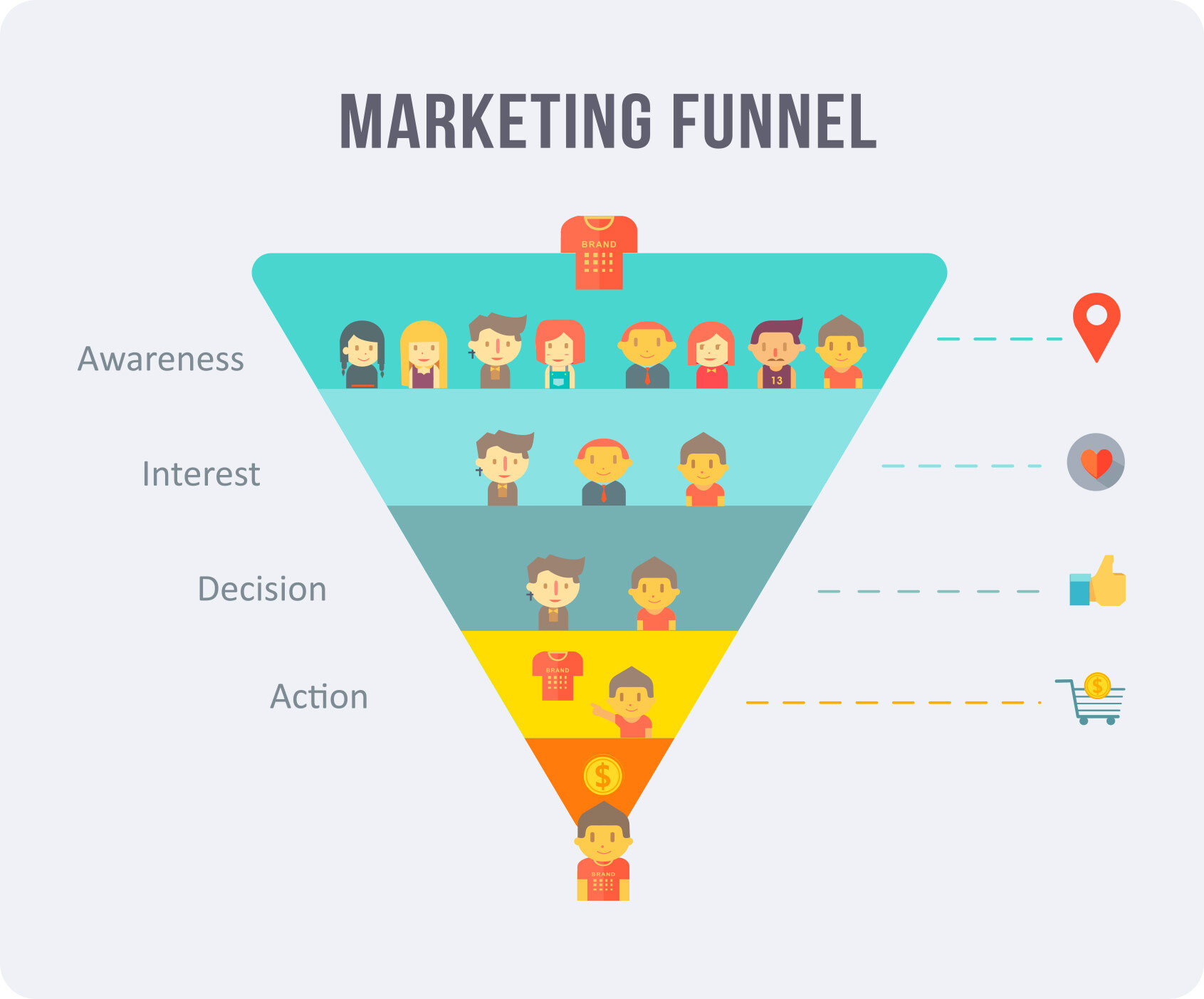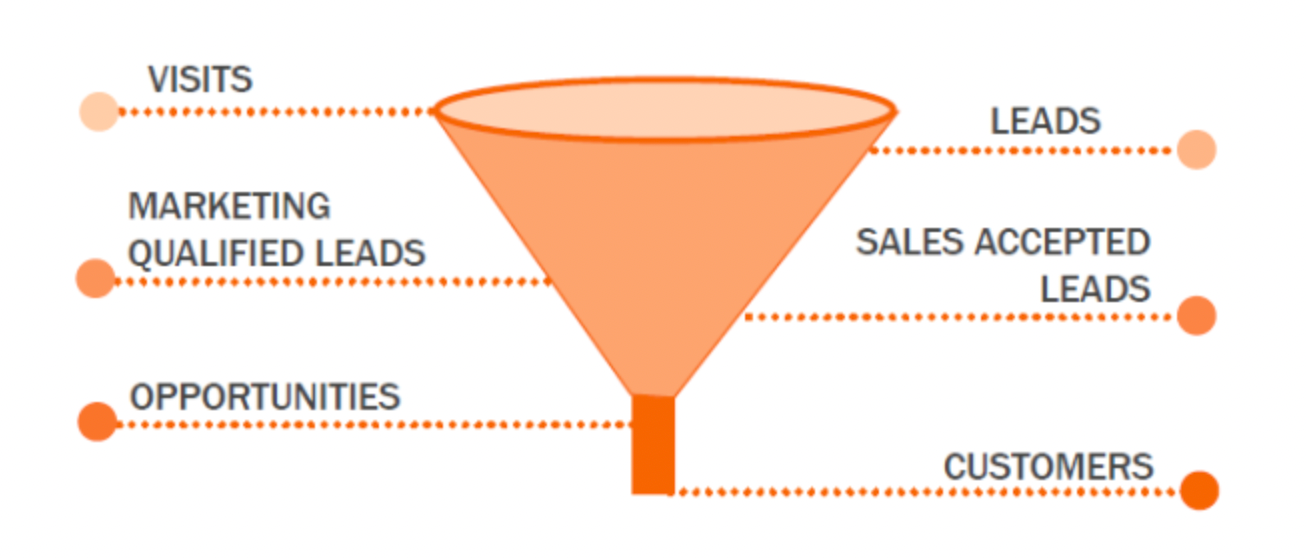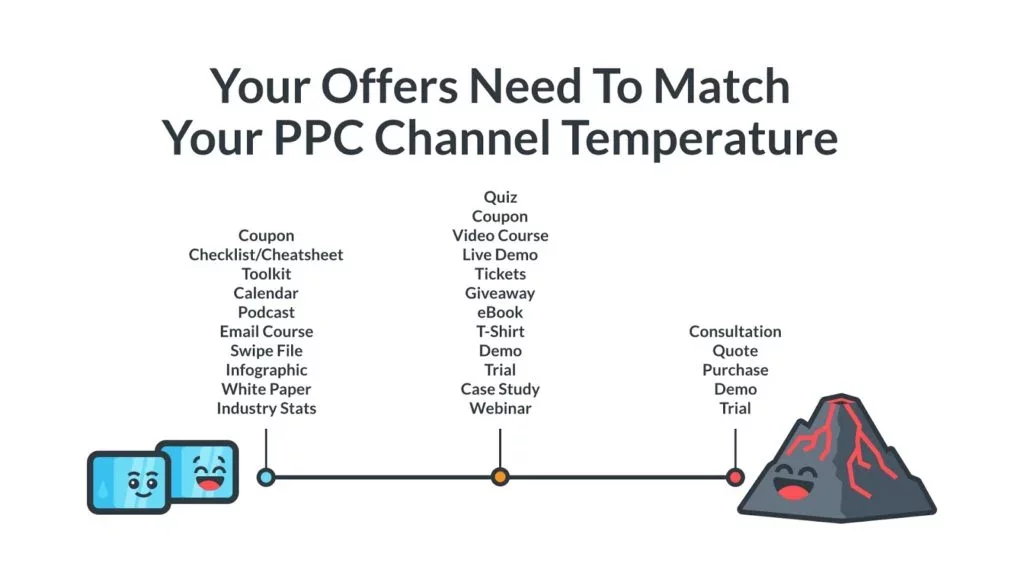Making a purchase decision is most often a long and complicated process. At each stage, marketers need to reach for different strategies and tools to convert leads into customers. In this article, you’ll learn what a sales funnel is and at what stages of the funnel it’s worth going for webinars.
The pool of your potential customers is very diverse: some of them are just looking at your product and company and comparing it with your competitors. Others are perfectly familiar with the offer, and there is very little left to complete the sale. A sizable group may not even fully know what your company does explicitly and whether the products or services really prove necessary. The sales funnel allows you to systematize your knowledge about potential customers and propose appropriate actions for each stage. This is why the ability to create it and classify leads properly is so important.
Table of Contents
What is a sales funnel?
Let’s start with the basics: a sales funnel is a pictorial representation of the sales process, which takes the form of a funnel or inverted pyramid. The path of a potential customer begins at the widest point of the funnel – usually not accompanied by purchase intent at that point, and may not be familiar with the brand and its product itself. Then, as they move through the sales funnel stages, they gain more and more knowledge, and there is less and less doubt accompanying them. The narrowest part of the sales funnel symbolizes the sale itself.
One can thus visualize how potential customers (i.e., leads) fall into the funnel and then gradually move toward the purchase decision and the purchase itself. How long this process takes depends on many factors. The ability to properly match leads to specific sales funnel stages plays a key role in any company’s marketing efforts. Of course, in the era of digital marketing dominance, the right tools play a key role.
At the same time, the sales funnel allows you to tailor marketing activities that will prove effective at each stage of the funnel. Of course, the needs of a potential customer who has first encountered the brand are completely different, and other tools will be effective at the final stage of the funnel.
Stages of the funnel
The sales funnel can be structured in several ways. Typically, three successive stages are distinguished starting from the top:
- Top of the Funnel (TOFU)
- Middle of the Funnel (Middle of the Funnel, MOFU)
- Bottom of the Funnel (Bottom of the Funnel, BOFU)
The top of the funnel is a potential customer at a very early stage. So they could, for example, have visited your blog looking for an answer to a specific question. Very often, leads at the top of the funnel also occur due to effective lead magnets. So you will have to wait for a purchase decision, but the ice has been broken.
The middle of the funnel is the transition stage between making contact and closing the sale. The customer is increasingly interested in your offer but still needs time and reasoning. This is an excellent time to provide them. This transforms a marketing lead into a sales lead.
Leads at the bottom of the funnel have already made a purchase decision. So usually, all that is needed is to enable them to complete the transaction and encourage them to finalize the process.
Sales funnel vs. marketing funnel
A marketing funnel is directly related to the sales funnel. These terms are also often used interchangeably. However, this is a simplification. In fact, the marketing funnel refers to the sales funnel and mirrors it. However, the different parts of the funnel focus on specific marketing actions taken to move potential customers (leads) down the sales funnel.
The successive stages of the marketing funnel reflect the degree of customer interest and engagement – from awareness of the product/service or the company itself through growing interest to the decision-making stage, and at the very end, action – i.e., finalizing the purchase.
The AIDA model represents this:

The stages of the funnel can also be broken down in a completely different way. Again, much depends on the approach adopted by a particular organization and how it operates. HubSpot’s sales funnel, for example, focuses more on the transformation process of acquired leads – from the visit to the site through the internal processes involved in “warming up” the lead to obtaining a conversion:

Funnel in b2b vs. b2c sales
When designing a funnel, it is important to take into account the unique characteristics of the sales process. On the one hand, it is influenced by the product or service itself, and on the other, by the customer profile.
The sales funnel will look different for e-commerce companies selling directly to consumers (b2c). Other elements go into the b2b sales process. First of all, in most cases, it will be more challenging to achieve conversions, the sales process will take much longer, and the preceding analysis may be more meticulous. The purchase decision usually involves many people as well. Internal procedures or budget issues, for example, are of considerable importance.
Therefore, it is necessary at each stage of the process to provide good argumentation and support the potential customer. Understanding a particular industry and its unique characteristics are crucial.
Lead nurturing and a sales funnel
The sales funnel is directly related to the subject of leads, i.e., your potential customers at different stages of the process. In an earlier article, we took a closer look at lead generation – the process of acquiring leads (take a peek here to learn more). So we’re talking about the very top of the funnel – a potential customer’s first contact with the brand.
Leaving contact information and consent to receive marketing communications is an important step. However, in order to move on to the next checkpoints, it will be necessary to effectively nourish the lead. So in this context, marketing refers to lead nurturing activities. Therefore, your marketing funnel should be designed to provide leads with nourishment at each stage. It is necessary to take into account their changing expectations and needs.
In order to properly define each stage, you also need to classify your leads accordingly. Often you will find that a potential customer who has just dropped into your network is already determined to buy, and you can take sales action accordingly. On the other hand, another lead may take months to get to the next stage. Many leads at the top of the funnel will have no sales potential.
Selecting content at successive stages of the funnel
The content you use throughout the process must evolve – exactly as your potential customer does.
This issue is presented in an interesting way by the experts of the Klientboost agency:

Warming up a cold lead, i.e., a potential customer who has just learned about your brand must be done according to a well-developed plan. There is still a long way to go to make a sale. So the lead must become convinced of your product or service and learn as much as possible about it – especially in the b2b sector.
Various educational materials will therefore work well, and the more exciting form they take, the better. Most importantly, they must provide interesting knowledge from the target group’s perspective. This is an ideal space for creating an expert brand image. It is not the time for intensive promotional activities: it’s easy to burn your lead, that is, simply discourage them from taking advantage of your offer.
As a lead magnet (you can read more about it in this post) you can use, among other things:
- e-book
- access to closed groups on social media
- premium content, such as extended tutorials
- industry report
- tools, e.g., pre-configured spreadsheets, access to applications and programs
- access to trial versions of products
- individual consultations with an expert
- online course
- admission to webinars and online events.
What to offer the audience? It’s a good idea to prepare a list of interesting content and use different formats. For example: if you run an accounting company and want to reach entrepreneurs who could potentially reach out for your services, a good idea would be a free e-book about registering a company, a webinar with a tax expert, or a calculator comparing different tax forms. If you have a marketing agency and are keen to reach out to e-commerce companies, you could prepare an event about social media promotion or record an episode of a podcast on the topic. And if you run a bike store in the b2c segment, it would be a good idea to prepare content on, for example, comparing different models of accessories or preparations for long bike rides.
In the next stage of the funnel, you can assume that the potential customer already knows your brand. However, they still need a reason to bring them closer to the sale. Of course, in this case, too, you should reach for content marketing opportunities. However, the type of content changes. The closer to the purchase, the more related it can be to your offer.
A demo of your product in the form of a video or a webinar presenting the latest features will be a solid argument for prospective customers. In the case of a digital product, it will be a good idea to provide a trial version of the software. Regardless of the industry and size of your company, it’s also a good idea to use the success stories of your existing customers. This is the best form of promotion and a benchmark for others.
At the final stage of the funnel, the lead is already warmed up enough and ready to make a decision. This does not mean, however, that a sale will happen automatically (although, of course, it can). The customer may require, for example, a face-to-face meeting with a company representative or a video consultation. They may also approach you with additional questions about the product or the terms of cooperation itself. Of course, you must take special care of these leads!
Successful in acquiring a customer? It’s not over!
While it might seem that with the finalization of the sale and the acquisition of the customer, the efforts come to an end, nothing could be further from the truth! It is worth “extending” the funnel to reap further benefits.
Especially for digital business representatives, it is clear that retaining customers is as important as acquiring them. This principle, by the way, works in any type of business, and bad brand reviews spread much faster than positive ones. Very often, the activities in this area are even more demanding, and the work never ends, but it is undeniably worth it!
If, after a stage of intensified promotional efforts, the customer is met with a vacuum, there is a huge risk that they will abandon the product and opt for the services of a competitor who would guarantee them adequate support and attention. So after the purchase, you need to make sure to educate the customer and assure that they get what they pay for. And if this creates new needs and you manage to build a strong relationship, it will also be possible to increase the value of your sales.
Again, content marketing delivers excellent results. What should you think about?
- customer onboarding
- knowledge zone containing comprehensive educational material
- mailings with updates
- social media activities
- company blog
- regular webinars
- the community gathered around the product.
A longer funnel means more satisfied and loyal customers. This, in turn, translates directly into sales results!
Sales funnel and webinars – where to use them?
The principle is simple: each funnel stage must offer the right kind of content for a conversion to take place. In doing so, the nature of the materials varies – in the initial stage, they focus on content and educational issues, while the final stage is primarily about sales formats.
Webinars will work great at any stage of the funnel. Here are sample events to cover the full path of leads – from entering the funnel to conversion:

Of course, webinars are also excellent for the later stage, after the purchase has been made. With the help of webinars and online meeting software, you can easily prepare the onboarding of customers, as well as subsequent events, so that your clients can experience the maximum potential of your products and learn about changes related to your offer.
Why reach out for webinars?
Webinar marketing is a choice of marketing experts around the world. Why is it so popular? Here are some of the most important points:
- Easy start: to create online events, all you need is a good platform and basic equipment, such as a camera built into your laptop and headphones with a microphone.
- Video format and interaction: research proves that modern users prefer video formats. At the same time, in the online world, we are increasingly interested in interacting. A webinar allows you to combine these two significant trends.
- Engaging audiences and encouraging action: what matters most in sales is motivating people to take a specific action. With many online formats, this is very difficult. Webinars give you far more options, such as displaying a CTA button during the presentation.
- All stages of the funnel: few formats work well at absolutely every stage of the sales process. In practice, a webinar is one of the best ways to effectively promote your business.
- Automation: conducting online marketing and sales activities will be much easier with automation. At ClickMeeting, you will benefit from automated and on-demand webinars that will significantly shorten processes and perform many tasks for you “on autopilot”. Automation can also extend to communication with your audience and many organizational activities.
- Integration with other tools: achieving a high conversion rate will not be possible without proper analytics. Software that supports sales funnel management is also becoming crucial. By integrating ClickMeeting with solutions such as Pipedrive, Keap, or the Zapier platform, the process of acquiring leads and processing them is definitely simpler and more efficient.
- Go one step further: with the help of webinar software, you will also prepare other formats that will brilliantly support your marketing and sales activities. Among other things, you can create courses, training, or workshops that will certainly respond to the needs of your target audience and allow you to attract customers even more effectively.
If you want to enrich your sales funnel, do it today. Test ClickMeeting for free and see how much you can achieve with webinars and online meetings.








